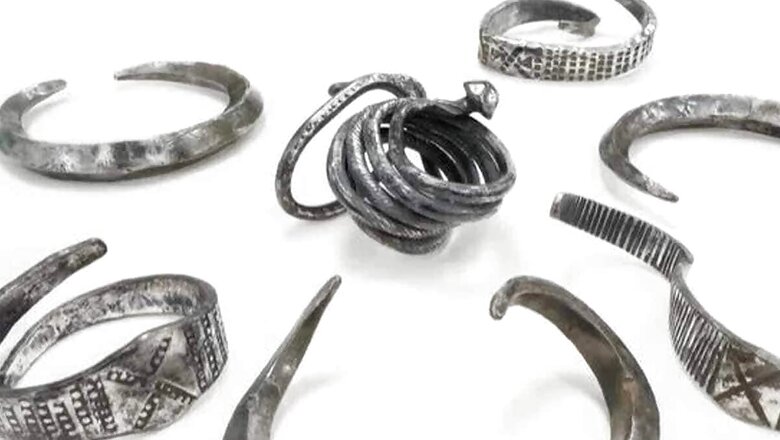
views
The discovery of a Viking-era silver treasure was made by a metal detectorist and archaeology student at Aarhus University in Denmark. Gustav Bruunsgaard’s metal detector started to vibrate as he was surveying farmland close to Elsted, a town north of Aarhus. When he dug through the soil, he came up with a single silver bracelet. A translated statement from the Moesgaard Museum in Hojbjerg states that a few days later, he went back to the field and unearthed six additional bracelets.
After Bruunsgaard informed authorities of the discovery, experts dated the artefacts to the 800s, which corresponds to the early Viking Period in Scandinavia (A.D. 793–1066). The armbands are currently on display at the Moesgaard Museum. They will be later transferred to the National Museum of Denmark.
It has been suggested that the seven silver pieces, which weighed a combined total of almost half a kilogramme, were exchanged for other commodities during the Viking Age and used as payment. As mentioned in their statement, the Moesgaard Museum highlighted that three of the heavily stamped, band-shaped rings in particular were of a very similar design made in Ireland, wherein the style gained popularity.
The museum states that three bangles with a very smooth, basic form are known to have originated in Scandinavia and England, while one ring, which resembles a coil or compacted spring, preserves a style comparable to those originating from Russia or Ukraine. According to museum historian Kasper H. Andersen’s statement, “Aarhus was a central hub in the Viking world” because of the discovery, which connects Aarhus with distant places like Russia, Ukraine and the British Isles.
Who Were Vikings?
According to History.com, a great number of Scandinavians emigrated from their native countries in search of wealth between the year 800 A.D. and the 11th century. Also known as Norsemen, or Northmen, these maritime warriors first launched their raids on coastal locations in Britain and Ireland, particularly undefended monasteries. In addition to much of modern-day Britain and Europe, they would also make their imprint as traders, raiders, pirates and settlers in sections of Iceland, Greenland, Newfoundland and modern-day Russia during the course of the subsequent three centuries.


















Comments
0 comment